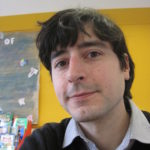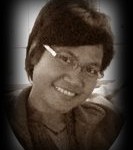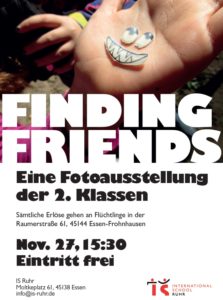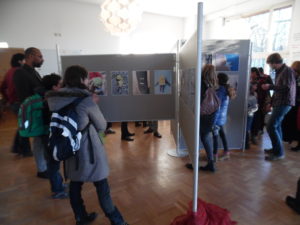
Vjekoslav Kovac, PYP teacher and librarian, International School Ruhr, Germany

Yuniarti Santosa, 2nd class PYP teacher, International School Ruhr, Germany
This article follows up on how grade 2 students incorporated action into the ‘How we organize ourselves’ unit of inquiry by illustrating students taking action and making connection across subjects.
Transferring an idea into action needs a process which requires deeper thinking and much effort. After the students shared their ideas with the school community, they started to get some feedback for further steps and their thinking was further challenged.
All teachers planned this unit collaboratively to provide many opportunities for students to make connections in their learning. During language arts, grade 2 students learned how to add details to their ideas. They explored different ways to generate ideas for writing stories. One child was able to define that an idea is a product of thinking. As he mentioned it, another student replied that they had not taken action to help the refugees; it was still just an idea.
In art, the students took a walk around the neighbourhood and visited a photo exhibition taken in different areas. The art teacher asked the students to share what they thought about the photos, how the photos made them feel, etc. As a follow up activity, the students participated in their own photography project which required them to take photos of interesting objects.
The students still had the desire to help the refugees, so I supported them by asking: “What is next?” A student made a connection and wondered, “Could we sell the pictures that we took in art and give the money to the refugees?”
…Well-planned inquiries provide an ideal context for learning both within and outside the programme of inquiry. It is also recognized that the subject areas have an integrity and essence of their own. Teaching about and through the subject areas is advocated when it enhances the transdisciplinary learning defined in the PYP. (Making the PYP happen, (2009) page 57)
The students made the connection to the photo exhibition that they visited a few weeks earlier. The art teacher supported the students to determine how they would sell their photos and to decide on the photo exhibition theme. The students came up with the title Finding friends. They realized that they needed support to make the action happening; some secondary students helped them distribute posters around the neighbourhood.

With the support from the entire school community (teachers, parents, secondary students), the second graders demonstrated their action by organizing a photo exhibition, Finding friends, in November 2016.

They auctioned their pictures off to raise money for the refugees living at the Handball Center. Some of the refugees joined the event and shared coffee and snacks prepared by grade 2 parents. The event raised more than €600.

During reflection, the students shared what they thought about their action. One student said that she was happy and felt proud at the same time because she could help people. Another student mentioned that the action really showed what caring means – caring in action. Other student thought that the action showed caring and being empathetic towards the current situation.
An explicit expectation of the PYP is that successful inquiry will lead to responsible action, initiated by the student as a result of the learning process. This action will extend the student’s learning, or it may have a wider social impact, and will clearly look different within each age range. PYP schools can and should meet the challenge of offering all learners the opportunity and the power to choose to act; to decide on their actions; and to reflect on these actions in order to make a difference in and to the world. (Making the PYP happen (2009), page 25)
—
Yuniarti (Yuni) Santosa is currently an assistant PYP Coordinator and a grade 3 class teacher at International School Ruhr in Essen, Germany. She has worked at PYP schools in Indonesia, Kazakhstan, Norway and Germany. Yuni has found that teaching at PYP schools in different countries have enabled her to understand more about the PYP values. She is also an IB Online Facilitator.
Vjekoslav Kovac is a former PYP teacher (English as a second language, language arts/ICT) and primary years librarian. He is now an IB DP English teacher, newsletter editor and Head of Secondary Years at International School Ruhr in Essen, Germany. Although International School Ruhr has been his first IB school, he has more than 12 years of teaching and writing experience in Croatia, Turkey, Georgia and Germany.

This is an inspiring example of teacher expertise being used to guide the learners into turning their connections and interests into student-initiated action. It’s also a great illustration of how important it is for us to respond to, and build on student contributions to the units. Thanks for sharing!